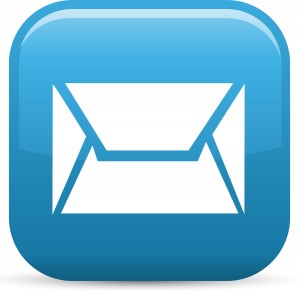 In the next two posts we’ll discuss ways to improve your email routine. This post is about managing and creating emails. The next post will offer suggestions on how to handle the emails you receive.
In the next two posts we’ll discuss ways to improve your email routine. This post is about managing and creating emails. The next post will offer suggestions on how to handle the emails you receive.
Managing Your Emails
Email can consume a large amount of time each day. Most people constantly check their inbox for email which, in turn, causes them to be less than 100% focused on their actual duties and responsibilities. Let’s consider some ways to better manage the process so that managers and employees can become more productive.
- Set aside specific times each day to manage email. An example would be scheduling a 30-minute session in the morning and another at the end of the day. Block these times on your calendar in order to reduce the number of potential interruptions. You’ll be surprised by how much can be accomplished by having time dedicated just for email.
- Turn off ALL email notifications. If you have time scheduled for managing email, you won’t need to be alerted every time you receive an email. Visual or auditory reminders are simply distracting.
- Use automatic replies when you are out of the office for conferences, vacation, and extended or offsite meetings. If people are aware that you’re unavailable, they’ll know to wait for a response instead of sending reminder or follow-up emails.
- Include your phone number in your signature line. In most cases, phones calls are more efficient that emails. This best practice has the potential to reduce the number of emails you receive.
- Use a shortcut at the beginning of the subject line to let people know what is required by an email. Some examples may be FYI (For Your Information), NRN (No Response Needed), REQUEST or REQ (Information is being requested), and REVIEW or RVW (Please review and respond with input).
- Respond to business emails only during work hours. It is important to establish boundaries. If you choose to reply to emails after work, do so using your email program’s offline mode. Allow the system to send them the next morning.
Email Creation
Think about the number of emails you receive. Do you need to add another one to the pile your employees already have? Could you pick up the phone or go talk to the person face-to-face? If you are practicing managing by walking around, those interactions could be used to share information.
Emails require thought. If email is necessary, consider the following:
- Curate the information needed. Be clear about what employees need to know versus what is nice for them to know. If possible, combine multiple emails into a single targeted email so that employees get the information they need in the most efficient way. This requires more effort on the part of the manager. By helping to reduce the number of emails employees receive, it helps employees stay focused on their work.
- Keep emails brief and to the point. Emails should be concise without coming across as abrupt or demanding.
- Remember to Copy with Care (cc). Consider whether someone really needs to be copied. The more people included on an email recipient list, the more responses you could potentially receive.
- Compose the email so that the default action requires no response. For example: when scheduling a meeting, provide a specific date, time, and location for the meeting. End by telling the recipients that if you don’t hear from them within a specified timeframe, you’ll assume the meeting fits their schedule.
- If the email is long or if there is a large amount of detailed information, break up the text by using bullets or headers containing the most important information.
Stay tuned for the next post where we’ll consider what to do with all the emails we receive. We’ll discuss specific ideas regarding deleting, answering, and archiving emails.
How do you manage your email inbox? What best practices do you use when creating emails?
P.S. – First time visiting? Welcome to the Agent In Engagement site. Thanks for taking the time to stop by! I hope you’ll explore the rest of the site. Let me know what employee engagement topics interest you.
If you enjoyed this article, you may also like…
- Step Away From Your Desk
- Are Managers Obsolete?
- Group 1: Employees Who Are Actively Disengaged
- Group 2: Employees Who Are Not Engaged
- Group 3: Employees Who Are Engaged
Let’s Get Engaged!
I’m Agent in Engagement Simpson…Greg Simpson.
My mission? To help companies succeed by focusing on how they engage, manage, and develop their employees.
My credentials? Award winning engagement work with Fortune 150 companies.
My next assignment? To come in from the field, the consulting field, and return to headquarters. There, I’ll lead the ongoing battle against the greatest nemesis in every company – employee disengagement.
I’m excited about this opportunity to connect with fellow “Agents.” Subscribe to the RSS Feed to receive the latest updates and/or register if you would like to comment on posts.
You can follow me @agtinengagement, email me at g…@a…t.com or learn more about me at www.gregoryfsimpson.com.